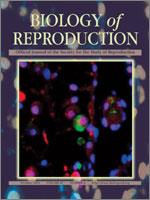Aurora kinase A (AURKA) is an important mitotic kinase involved in the G2/M transition, centrosome maturation and separation, and spindle formation in somatic cells. We used transgenic models that specifically overexpress in mouse oocytes either wild-type (WT-AURKA) or a catalytically inactive (kinase-dead) (KD-AURKA) AURKA to gain new insights regarding the role of AURKA during oocyte maturation. AURKA activation occurs shortly after hCG administration that initiates maturation in vivo. Although AURKA activity is increased in WT-AURKA oocytes, resumption of meiosis is not observed in the absence of hCG administration. Control oocytes contain one to three microtubule organizing centers (MTOCs; centrosome equivalent) at prophase I. At the time of germinal vesicle breakdown (GVBD), the first visible marker of resumption of meiosis, the MTOC number increases. In WT-AURKA oocytes, the increase in MTOC number occurs prematurely but transiently without GVBD, whereas the increase in MTOC number does not occur in control and KD-AURKA oocytes. AURKA activation is biphasic with the initial activation not requiring CDC25B-CDK1 activity, whereas full activation, which is essential for the increase in MTOCs number, depends on CDK1 activity. AURKA activity also influences spindle length and regulates, independent of its protein kinase activity, the amount of MTOC associated with gamma-tubulin. Both WT-AURKA and KD-AURKA transgenic mice have normal fertility during first 6 mo of life. These results suggest that although AURKA is not a trigger kinase for G2/M transition in mouse oocytes, it regulates MTOC number and spindle length, and, independent of its protein kinase activity, gamma-tubulin recruitment to MTOCs.
How to translate text using browser tools
25 July 2012
Aurora Kinase A Drives MTOC Biogenesis but Does Not Trigger Resumption of Meiosis in Mouse Oocytes Matured In Vivo
Petr Solc,
Vladimir Baran,
Alexandra Mayer,
Tereza Bohmova,
Gabriela Panenkova-Havlova,
Adela Saskova,
Richard M. Schultz,
Jan Motlik
ACCESS THE FULL ARTICLE

Biology of Reproduction
Vol. 87 • No. 4
October 2012
Vol. 87 • No. 4
October 2012
AURKA
CDC25B
centrosome
mouse oocytes
MTOC
resumption of meiosis
spindle formation




